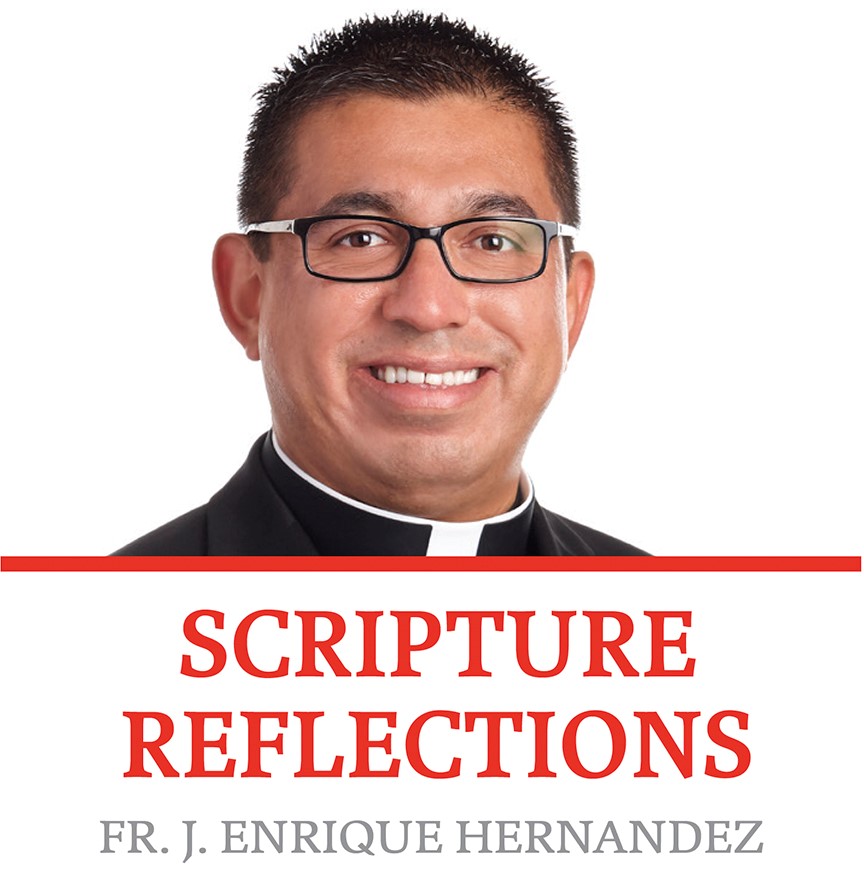Scripture Readings, Jan. 1, 2023
Sunday, Jan. 1, 2023
Solemnity of Mary, the Holy Mother of God
Numbers 6:22-27
Galatians 4:4-7
Luke 2:16-21
I have a great love and devotion to Mary, our mother. I grew up praying in a small chapel in my neighborhood where the image of Our Lady of Perpetual Help was in the main altar. We pray the rosary as a family often, especially in the months of May and October. I always have felt the intercession and presence of the Virgin Mary in my life.
On Jan. 1, within the Octave of Christmas, we celebrate the Solemnity of Mary, the Holy Mother of God. Do you know that this proclamation of Mary as Mother of God is the first official Marian Dogma? The Greek word for the title is Theotokos, which literally means “God-bearer.” That title is one of the oldest and most commonly used titles for Mary, with Christians using it in the very first centuries of the Church. The title also appears in one of the oldest known Christian prayers, the Sub Tuum Praesidium (“Beneath Your Protection”), an early form of the Memorare that dates to the third century.
The first Christians called Mary the “Mother of God” without hesitation. There was scriptural precedent, and it seemed logical. “Most blessed are you among women, and blessed is the fruit of your womb. And how does this happen to me, that the mother of my Lord should come to me?” (Luke 2:42-43) If Jesus was God, and Mary was his mother, then that made her the Mother of God. That sort of logic depends on a principle called the “Communication of Idioms.” According to that principle, whatever one says about either of Christ’s natures can be truly said of Christ himself. That’s because his two natures, the divine nature and the human nature, were united in him. He is one divine person.
In the fifth century, however, some people raised the same objections to the title that many non-Catholics raise today. They argued that the title “Mother of God” implied that Mary was the “originator of God.” Those objectors said that they could accept the title “Mother of Christ,” but not “Mother of God.” At the heart of those objections, however, was an objection to the unity of Christ’s two natures. Mary, they claimed, gave birth only to Christ’s human nature, not his divine nature. The Church, led by Pope Celestine I and St. Cyril of Alexandria, disagreed. As St. Cyril pointed out, a mother gives birth to a person, not a nature. Accordingly, Mary gave birth to Jesus Christ, who was and is a divine person. Although Mary did not “originate” or “generate” God, she did bear him in her womb and give birth to him. She was God’s mother.
The controversy over Mary’s title as “Mother of God” was addressed in 431 A.D. at the Council of Ephesus. There, more was at stake than simply defending Mary’s title. The Christian teaching about Christ’s two natures was the real issue. The Church wanted to settle one question: Was Jesus one person or two? Rejecting the teaching of the heretic Nestorius, the Church declared that Jesus is one divine person, with two natures — his mother’s human nature and his father’s divine nature. Mary did not give Jesus his divine nature or his divine personhood — those he possessed from all eternity as the only begotten son of the father. But she also didn’t just give him his flesh: She gave birth to the whole person. She gave birth to Jesus Christ, both God and man. That is what we confess every time we say the Apostles’ Creed. Calling Mary “Mother of God” states a truth that must be stated in order to protect an essential truth about Christ.
“Mary kept all these things, reflecting on them in her heart.” (Luke 2:19) I love this line from the Gospel because Mary is teaching us to keep and reflect on all the amazing things that the Lord has done and will continue to do for our salvation.
What are some of those things that Mary reflected in her heart? The Annunciation, the visitation to Elizabeth and the leap for joy of John the Baptist in the womb, The humble birth of the savior in a manger, the visitation of the shepherds and the Magi, the presentation of Jesus in the temple and the words of Simeon and Anna about Jesus, and the flight to and return from Egypt to protect Jesus.
Like Mary, we cannot forget what the Lord has done in our lives. We need to remember the wonders of the Lord in order to not fall into despair, but to glorify the Lord and be thankful for his wonderful works. There is a kind of funny, popular song in Spanish that says “I don’t forget last year because it left me very good things: a goat, a black donkey, a white horse and a good mother-in-law.”
As we begin this new year, let us thank the Lord for the wonderful blessings that we received in 2022. “Then the shepherds returned, glorifying and praising God for all they had heard and seen.” (Luke 2:20)

